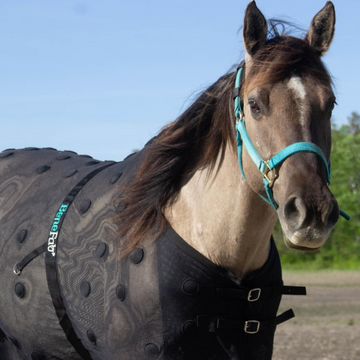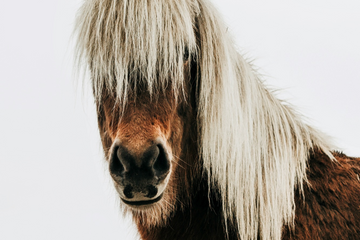If you’re into horses, you’ve probably heard of Cushing’s Disease. It’s also known as Pituitary Pars Intermedia Dysfunction (PPID). This condition is one of the most common hormonal disorders in older horses. While it can’t be cured, it can be managed effectively with the right care. Let’s break down Cushing’s Disease, its symptoms, and how you can help a horse diagnosed with it.
Causes of Cushing’s Disease in Horses
Cushing’s Disease in horses starts in the pituitary gland at the base of the brain. This gland can get too big and produce too much of a hormone called ACTH. This leads to too much cortisol, a stress hormone that can cause problems in different body parts. While any horse can develop Cushing’s, it is much more common in horses over the age of 15. Ponies and certain breeds may also be more prone to developing the condition.
Signs and Symptoms of Cushing’s Disease
Horses with Cushing’s Disease often show a range of symptoms, including:
-
Long, Curly Coat: They might have a thick, wavy coat that doesn’t shed properly, even when it’s warm.
-
Excessive Drinking and Urination: You might notice they’re drinking and peeing more than usual.
-
Lethargy and Muscle Loss: These horses may seem tired and could lose muscle along their back.
-
Laminitis: This painful hoof condition is common in horses with Cushing’s Disease.
-
Increased Infections: Due to a weakened immune system, horses with Cushing’s may develop more frequent infections.
-
Potbelly: A combination of losing muscle and shifting fat can give them a rounded belly.
If you notice any of these symptoms in your horse, it's a good idea to call your vet for testing and diagnosis.
Diagnosis and Testing of Cushing’s Disease

Diagnosing Cushing’s Disease typically involves blood tests to measure ACTH levels. Since these levels can change with seasons, your vet may want to do several tests to confirm the diagnosis.
Managing Cushing’s Disease in Horses
There’s no cure for Cushing’s Disease, but you can manage the symptoms to help your horse live a better life. Here are some ways to do that:
-
Medication: The most commonly prescribed medication is Prascend, which helps regulate hormone production.
-
Diet Management: Feed your horse a diet low in sugar and starch to help prevent hoof problems. High-quality hay and controlled grain portions are important.
-
Regular Farrier and Vet Care: Since laminitis is a significant risk, frequent Farrier care is essential. Routine vet check-ups also help monitor the condition.
-
Body Clipping and Grooming: If your horse has trouble shedding, regular body clipping can help keep them comfortable.
-
Supplements: Supplements rich in omega-3s or antioxidants can help keep your horse healthy.
Caring for a Horse with Cushing’s Disease
A horse diagnosed with Cushing’s Disease can still live a happy, active life with proper care. Adjust their diet, start them on medication, and keep up a regular care routine to manage their symptoms. If you suspect your horse has Cushing’s, or has already been diagnosed, it’s important to work closely with your vet.






















